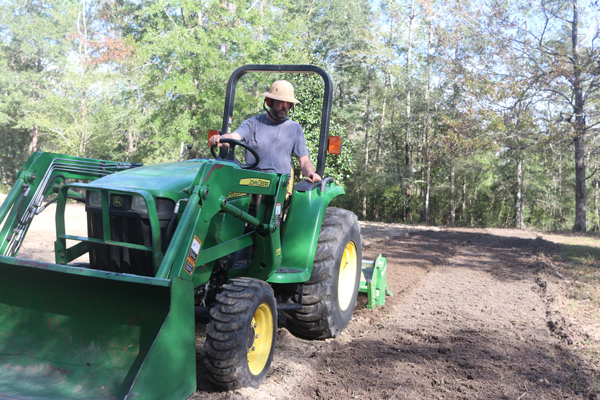Laura comments:
Dave: I’m a relative newbie with a small suburban garden and am trying no till, but in my raised beds, I don’t think it is the same issue as for you. I have seen other sites claiming that they actually no till farm a number of acres with great success (I think this was in the north east) and I’m wondering if you have tried a small plot this way and it wasn’t successful, or you just think its a waste of time. Since you are working on a much much larger scale that I am, I’m just curious about that part. The rest, I agree. Keep posting.
Though it is possible to plant a large no-till garden, we haven’t found it to be at all practical due to the lack of safe mulching materials. Some use wood chips; however, finding enough wood chips is usually difficult. Secondarily, handling the truckloads of chips takes a high amount of effort. Another possibility you will see often is using hay or straw. Unfortunately, we’ve seen gardens hit with residual herbicide from going that route. See: Grazon
Hence, we have often used cover crops to improve soil, and then tilled them under and planted on top. Or we’ve done row gardens and fed them with compost tea, alfalfa pellets and other things to get a yield in a larger space.
If you were able to grow a cover crop and then crimp and seed into it, it could work excellently. Especially if you were able to integrate grazing animals. But realistically, when we can simply use a tiller, then make beds and/or rows and plant the same day, then just control weeds with a hoe – compared to throwing down cardboard, moving tons of materials, and hunting down safe hay/straw – it’s a no brainer.
Even a conventionally sprayed and chemical-fertilized backyard garden is probably better than going to the store for groceries. That said, in my Grocery Row Gardens, we tilled once and then mulched the beds as we had materials. Sometimes we’ve hoed the paths when we didn’t, or planted cover crops to suppress weeds.
There’s a big scaling issue we’ve found with the no-till gardening approach. A small garden is super easy to do. We’ve made some amazing “Lasagna” gardens. But as it gets bigger, it gets much harder. Then, when you get really big and you have cows and tractors and crimpers and no-till seeders, it gets easier again.
But on a large backyard scale (such as the quarter acre we currently farm) we haven’t always been able to dodge the material and labor issues. Right now I have some good unsprayed hay and some wood chips so we’re doing mostly no-till on our quarter acre, but when I don’t have those materials, I don’t worry about it. The main goal is to grow the best food we can manage with what we have, rather than striving for perfection. Do what you can with the tools available and don’t be afraid to jump from one gardening method to another as your space, time and resources allow, keeping that “growing food” goal in mind!
I hope that helps.


3 comments
Thanks Dave. I appreciate the response. May you be blessed with a bountiful harvest. Laura
I am still having trouble finding ‘clean’ mulch, mushroom compost, soil, for our rocky hills. I managed enough for a small asparagus bed. My raised beds are barely passable, with a base of weeds, trees, grasses, household, etc., the top is a mix of soil we dragged from Florida, and some added jungle garden soil. I think I need more nitrogen, to account for the breakdown of the hay, weeds, graases, foods, underneath, agree??? Also, was gifted Steve Gabriel’s book, Silvopasture. We have lots of woods, woody areas, and hills that goats or pigs might do well on. But I am having a hard time wading through all the climate change agenda…have you thought on silvopasture? Thanks. Even though it’s still cool here, I am using my D2G skills,and started weed water, got the small child involved! God bless you. Thanks, betty
Usually wood chips from tree-clearing companies and utility companies are fine. We’ve been in the same boat – trying to get organic matter is tough now. Everything is suspect.
If the mulching materials are on the top of the bed, they don’t need extra nitrogen. If they are mixed into the soil, you will. I have done some reading on Regenerative Agriculture. One thing that has stuck with me is the value of cover crops. For biomass production to make lots of compost, it’s hard to beat sunn hemp and sorghum-Sudan grass. Seeds for both are at Feed and Seed stores.
Comments are closed.